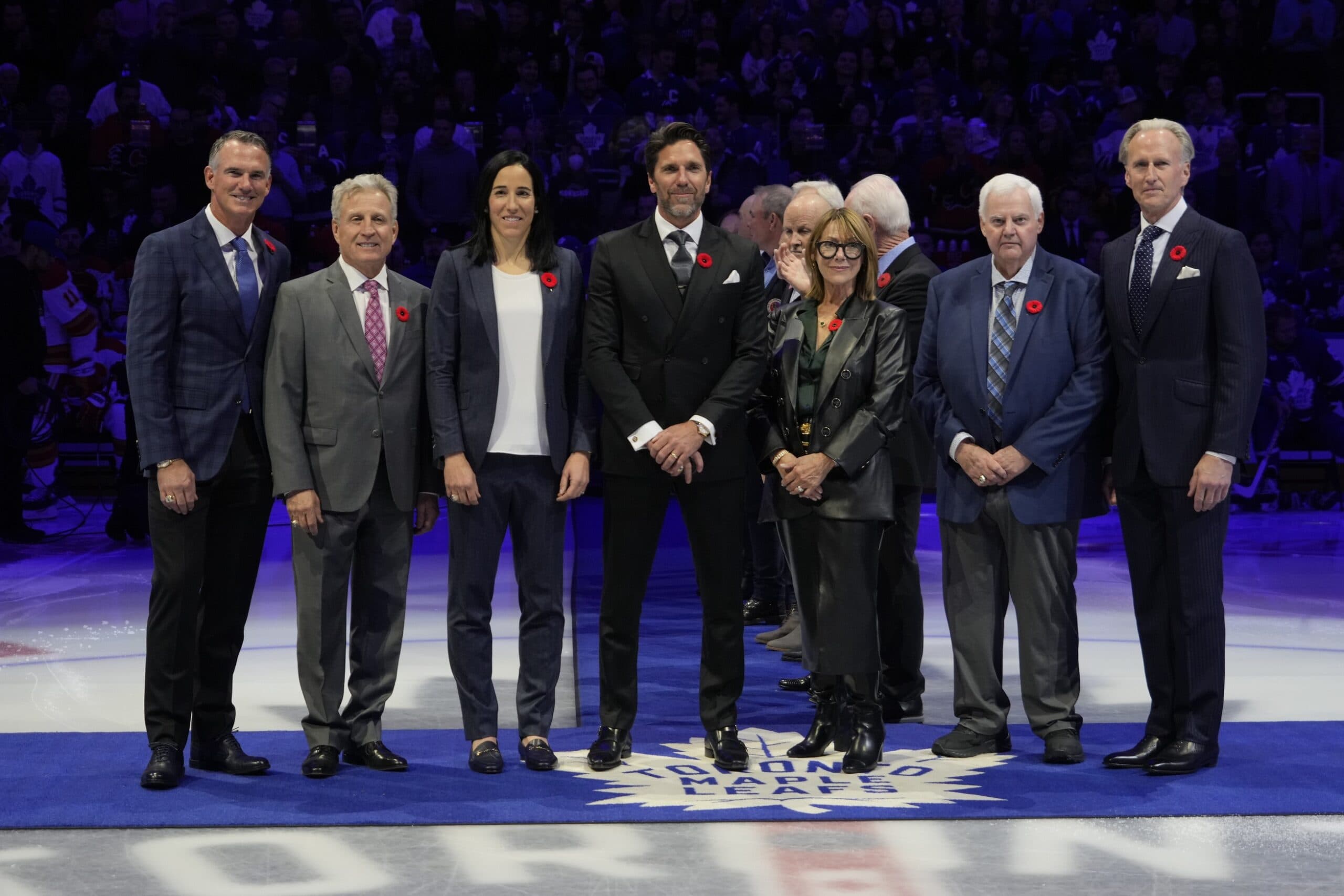Nation Sites
The Nation Network
FlamesNation has no direct affiliation to the Calgary Flames, Calgary Sports and Entertainment, NHL, or NHLPA
Two-time Flames: Mike Vernon began and ended his Hall of Fame career as a Flame

Photo credit: John E. Sokolowski-USA TODAY Sports
Back in November 2023, netminder Mike Vernon was inducted into the Hall of Fame, putting a tidy bow on what was a lengthy, distinguished playing career.
Vernon was the fifth player drafted by the Flames to get inducted into the Hall – following Al MacInnis, Brett Hull, Joe Nieuwendyk and Sergei Makarov – and the first Hall of Fame inductee to both begin and end his NHL career with the Flames. Sure, Vernon didn’t go bell-to-bell with the franchise, but he had a superb tenure with the Flames.
As we look back at the history of players that had two runs with the Flames, let’s take a look at a Hall of Fame two-time Flame.
Arrival #1: 1981 NHL Draft
A Calgary product, Vernon played his way through local minor hockey, suiting up with the Calgary Canucks and Calgary Wranglers. (Due to some quirks in CHL’s roster rules, he played for the Portland Winterhawks in back-to-back Memorial Cups, winning once.) He was selected by the Flames in the third round, 56th overall, in the 1981 NHL Draft.
Vernon went pro in 1983 and spent two full seasons in the minors before getting a mid-season call-up in 1985-86 with the club in the midst of the record losing streak. Vernon managed to turn the tides and stuck with the team for the remainder of the season. He was given the net for the Flames’ playoff series with the Winnipeg Jets, as he had a better record against them than incumbent starter Reggie Lemelin. Vernon basically held onto the net from that point until his departure.
With Vernon between the pipes the Flames went to two Stanley Cup Finals, losing to Montreal in 1986 and beating them in 1989. He also basically rewrote the goaltending record book. But by the early 1990s, a few factors were conspiring to send Vernon elsewhere.
Departure #1: Trade with Detroit
A few things happened in the early 1990s:
- NHL player salaries began creeping up significantly during the early 1990s.
- The Flames drafted Trevor Kidd in the first round of the 1990 NHL Draft, and you don’t draft a goalie in the first round without planning to work him onto the NHL stage before too long.
- Vernon turned 30 near the end of the 1992-93 season and, as the saying goes, Father Time is undefeated.
- The Canadian exchange rate relative to the U.S. dollar tumbled during the decade, causing challenges for teams like the Flames paying escalating player salaries in U.S. dollars while taking in revenue in Canadian currency.
So following the 1993-94 season, the Flames ripped off the Band-Aid, sending Vernon to Detroit in a one-for-one swap for blueliner Steve Chiasson.
He spent three seasons with Detroit, taking two trips to the Stanley Cup Final, winning a Jennings Trophy, a second Stanley Cup and the Conn Smythe as playoff MVP during the 1997 Cup run. Following that run, he was traded to San Jose, where he spent parts of three seasons – finishing the third season with a brief stop with the Florida Panthers.
Arrival #2: Trade with Minnesota
Following the 1999-2000 season, the NHL welcomed a pair of teams: the Minnesota Wild and the Columbus Blue Jackets. Vernon was exposed by Florida in the expansion draft and selected by the Minnesota Wild. (The Panthers protected, ironically enough, Trevor Kidd.)
The Wild selected four goaltenders in the expansion process, and opted to trade Vernon to Calgary the same day in exchange for the rights to unsigned college prospect Dan Cavanaugh and a 2001 eighth-round pick.
Vernon played in a tandem with Fred Brathwaite in 2000-01, but was a distant backup to Roman Turek in 2001-02. Vernon won just twice in his final NHL season.
Departure #2: Retirement
Following his final stint with the Flames, Vernon retired from playing hockey.
The Flames retired his number 30 in 2007 and he was inducted into the Hockey Hall of Fame in 2023 after nearly two decades of eligibility.
Breaking News
- FlamesNation Mailbag: Waiting for Santa with reader questions
- Flames injury news: positive signs for Martin Pospisil
- Recap: Martin Frk leads Wranglers to memorable Winter Wranglerfest win in more ways than one
- Scotia Place: a street-level look at December construction progress
- Beyond the Boxscore: Flames come out swinging in big 6-3 win over Golden Knights
